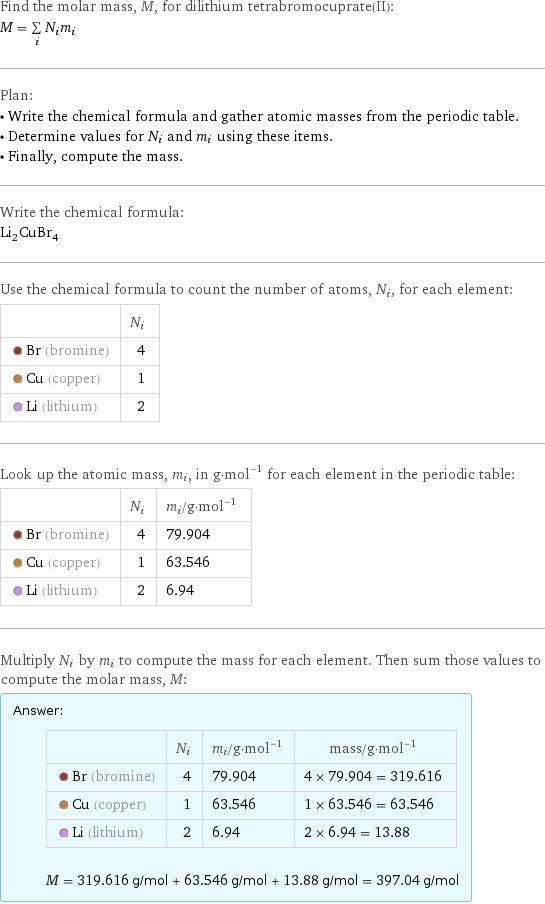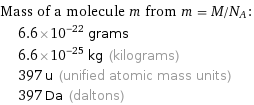Input interpretation

dilithium tetrabromocuprate(II) | molar mass
Result

Find the molar mass, M, for dilithium tetrabromocuprate(II): M = sum _iN_im_i Plan: • Write the chemical formula and gather atomic masses from the periodic table. • Determine values for N_i and m_i using these items. • Finally, compute the mass. Write the chemical formula: Li_2CuBr_4 Use the chemical formula to count the number of atoms, N_i, for each element: | N_i Br (bromine) | 4 Cu (copper) | 1 Li (lithium) | 2 Look up the atomic mass, m_i, in g·mol^(-1) for each element in the periodic table: | N_i | m_i/g·mol^(-1) Br (bromine) | 4 | 79.904 Cu (copper) | 1 | 63.546 Li (lithium) | 2 | 6.94 Multiply N_i by m_i to compute the mass for each element. Then sum those values to compute the molar mass, M: Answer: | | | N_i | m_i/g·mol^(-1) | mass/g·mol^(-1) Br (bromine) | 4 | 79.904 | 4 × 79.904 = 319.616 Cu (copper) | 1 | 63.546 | 1 × 63.546 = 63.546 Li (lithium) | 2 | 6.94 | 2 × 6.94 = 13.88 M = 319.616 g/mol + 63.546 g/mol + 13.88 g/mol = 397.04 g/mol
Unit conversion

0.397 kg/mol (kilograms per mole)
Comparisons

≈ 0.55 × molar mass of fullerene ( ≈ 721 g/mol )

≈ 2 × molar mass of caffeine ( ≈ 194 g/mol )

≈ 6.8 × molar mass of sodium chloride ( ≈ 58 g/mol )
Corresponding quantities

Mass of a molecule m from m = M/N_A: | 6.6×10^-22 grams | 6.6×10^-25 kg (kilograms) | 397 u (unified atomic mass units) | 397 Da (daltons)

Relative molecular mass M_r from M_r = M_u/M: | 397